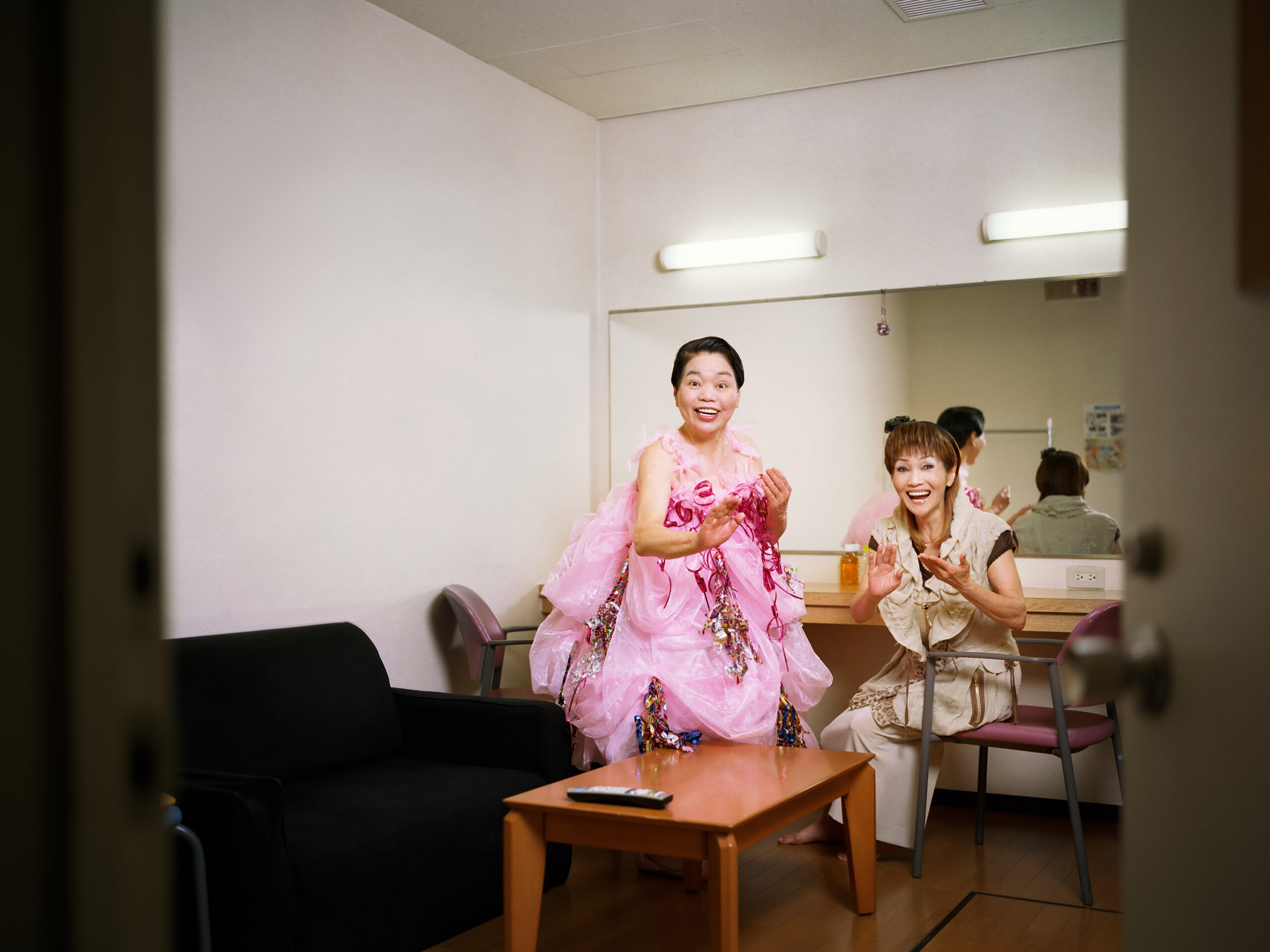笑いの山脈
STATEMENT
right there, like intersections on a go board, and take photos of people working on the street and in restaurants. When someone caught my eye, I would talk to them, decide on the camera angle, and set up the lighting. I absolutely loved the amazing feeling of turning the streets of Manhattan or the Brooklyn ghetto into a studio for only a few minutes. I kept on taking these environmental portraits that contain a wide scope of the subject’s surroundings and before long I felt that this would be my forte. During those days spent building up the foundations
of my art, the feeling of fun was stronger than the pain of financial hardship.
Yet, it’s a fact that the meaning, the prospects, of me, a Japanese person, continuing to take photos in New York gradually diminished. That’s what I was feeling before I came back to Japan. I then started sketching the outlines of my goals: to one day have a collection of photos taken in Japan on the shelves of Dashwood Books, a bookstore in Manhattan devoted entirely to photography, and to become one of Japan’s top portrait photographers, one who would be asked to shoot for the New York Times.
Kei Tani’s “Gatcho-n” sparked heart-pounding anticipation about photography projects I could only take on in Japan. But soon afterward I heard news of Tani’s death. I was deeply
saddened by no longer being able to photograph him and that strengthened my desire to record comedic art on film.
(excerpt from the introduction by Shoda Masahiro)2010年のときのこと。
下北沢のカフェに入り、置いてあった雑誌を何冊か手にとって座席について適当に読んでいると、谷 啓さんがトロンボーンを抱えた写真に目が止まった。
その写真はモノクロで佇まいがカッコよく、自分もいつかはこの人を撮ってみたいという衝動に駆られた。自由に撮れるなら国民的ギャグ「ガチョーン」
のポーズで、撮影場所は新宿にあったキャバレー「クラブハイツ」のような昭和感の漂うきらびやかで壮大な空間、アングルはあおりながらなど、より
具体的なイメージへ没入していき、そのまま他の雑誌を読み進めることなくそのカフェを後にした。当時、僕はニューヨークから帰国して間もないこともあり、日本でしか撮れない写真を求めていた。
ニューヨークにいた2009年までの3年間、4×5の大型カメラと照明機材を地下鉄でひとり運びながら、碁盤の目のような街を右に左に歩き回っては、スト
リートやレストランで働く人たちを撮り続けた。気になった人に声をかけ、アングルを決めてライティングをする。マンハッタンの街中やブルックリンの
ゲットーが数分の間だけ撮影スタジオになっていく不思議な感覚がたまらなく好きだった。被写体の周辺環境も広く含ませたエンバイロメンタルポートレ
イトこそが 、自分の写真だと言えるほどに向き合い続け、その礎を築き上げる日々は金銭的な辛さより楽しい気持ちの方が上回っていた。
しかしながら、日本人である自分がニューヨークで写真を撮り続ける意味や視点が、徐々に弱まっていることも帰国前には感じていたのも事実で、いつか
は日本で撮影した自分の写真集が、マンハッタンにある写真集専門店「ダッシュウッド ブックス」にも並び、ニューヨークタイムズから撮影依頼がくるよ
うな日本を代表するポートレイトフォトグラファーになりたい、そんな目標を描きはじめていた。
この谷啓さんの「ガチョーン」をきっかけに、日本でしか撮れないプロジェクトを作れそうな予感に胸を高鳴らせはじめて間もなく、谷さんの訃報を聞いた。
もう撮影できないという哀しみは深く、芸を写真で残したい、そんな思いを強くした。(笑いの山脈 序文より一部抜粋)

Title
Author
Publisher
First published in
Essay
Hardcover
Price
ISBN-13
“笑いの山脈”
Shoda Masahiro
Ohta Publishing Co.
June 2022
Yu Nagashima
184 pages, Bilingual (EN & JP)
JPY6,000+TAX
978-4-7783-1811-6
BUY NOW